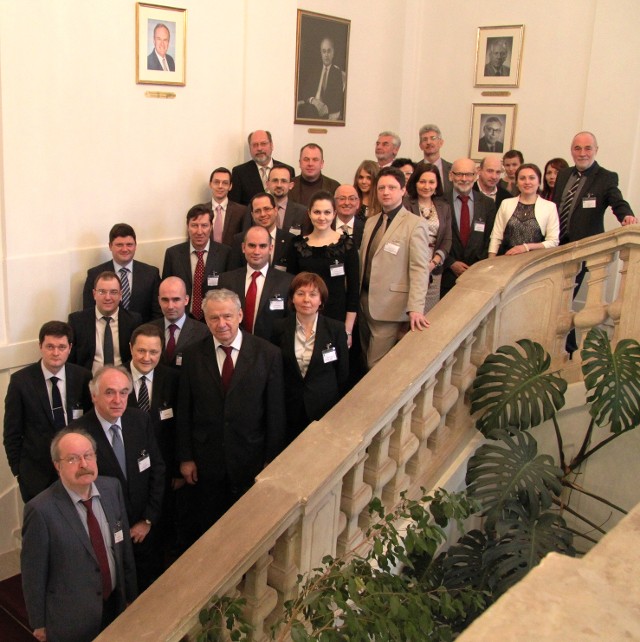Modeling the future of the Eurasian economic space
 Three CASE Fellows: Marek Dabrowski, Irina Tochitskaya and Matthias Luecke, were among the researchers from EU, Ukraine, Belarus and Russia, who participated in workshop organized by International Institute for Applied System Analysis (IIASA). The meeting was on March 6th and 7th, 2014 in Laxenburg, Austria, and was organized within a project “Challenges and Opportunities of Eurasian Economic Integration”.
Three CASE Fellows: Marek Dabrowski, Irina Tochitskaya and Matthias Luecke, were among the researchers from EU, Ukraine, Belarus and Russia, who participated in workshop organized by International Institute for Applied System Analysis (IIASA). The meeting was on March 6th and 7th, 2014 in Laxenburg, Austria, and was organized within a project “Challenges and Opportunities of Eurasian Economic Integration”.
The main goal of the meeting was to “discuss and propose new methods to understand the challenges and potential benefits of economic cooperation and integration ‘from Lisbon to Vladivostok’”. Researchers compared, contrasted, and evaluated various methodologies used in Eurasian integration’s assessment, and tried to reach a conclusion as to what kind of approach would be the most adequate “to carry out a comprehensive and independent analysis of the prospects on the Eurasian integration”.
Marek Dabrowski for example argued that “EU’s experience in building complex and flexible net of economic and political relations with non-member countries can serve as a good lesson and example to follow by other regional integration blocks which also face the problem of shaping their external relations with countries (…) interested in close cooperation but not membership in a given block”. In his presentation he described and analyzed EU’s models of external cooperation. After talking shortly about the history of EU’s involvement in economic and political relations with other countries, prof. Dabrowski discussed various models and degrees of integration - association agreements (AAs), free trade agreements (FTAs), bilateral or multilateral sector agreements, bilateral action plans, etc. He also stressed the flexibility of the arrangements and the underlying respect for partners’ sovereignty.
A comparison of two alternative methodologies used to asses growth effects of economic integration, computable general equilibrium (CGE) modeling and gravity model cum Melitz style productivity growth, was offered by another CASE Fellow - Matthias Luecke. He compared the assumptions and findings of these models. Having discussed their applicability to the Eurasian context, he recommended that policy makers do not “rely exclusively on a single model to assess this complex issue”.
Irina Tochitskaya, together with Evgeny Vinokurov from Eurasian Development Bank, and Igor Pelipas from IPM Research Center, attempted to assess the potential economic integration between EU and the emerging Eurasian Economic Union (EEU). They examined the available general equilibrium models used to study the economic impact of integration agreements and analyzed econometric methods applicable to the study of regional integration. Moreover, they discussed “the applicability and constraints of other methods used to evaluate the effects of regional commercial agreements” (the presentation was based on the study commissioned by the Eurasian Development Bank).
The presentations delivered by the participants of the workshop are available below.
All photos courtesy of http://www.iiasa.ac.at.

